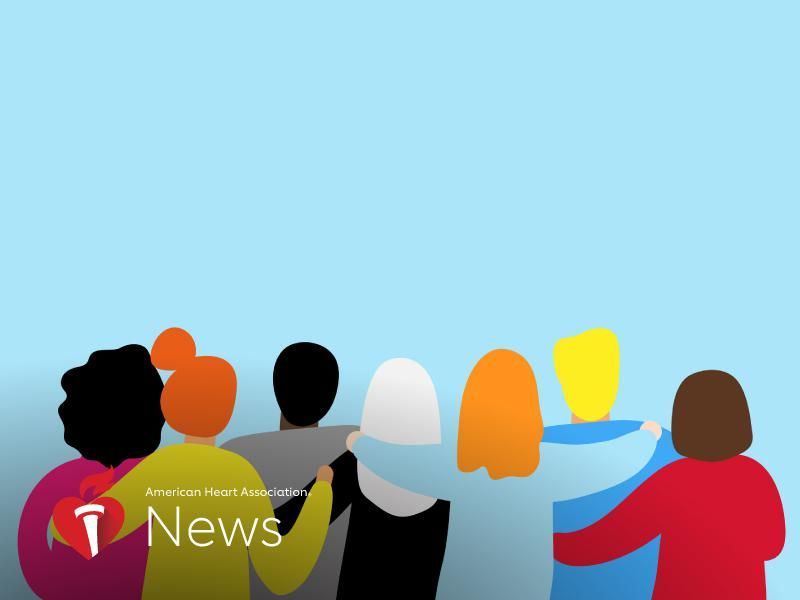
THURSDAY, June 10, 2021 (American Heart Association News) — The coronavirus pandemic and the equity movement have shined a spotlight on longstanding systemic problems that contribute to health disparities linked with factors such as race and ethnicity, socioeconomic status and sexual identity.
But health disparities don’t only affect those facing them. In a time of deep division and uncertainty, experts see opportunities to remind people everyone is connected.
“Not addressing inequities and not assuring opportunities for the most vulnerable in our society actually harm us all,” said Dr. Lisa Cooper, founder and director of the Johns Hopkins Center for Health Equity in Baltimore. “We’re all paying for the cost that this has had on our economy and health care system.”
That cost is steep.
Racial health disparities result in about $93 billion in excess medical care costs and $42 billion in lost productivity each year, according to a 2018 analysis from the W.K. Kellogg Foundation and the nonprofit Altarum. On top of being costly, disparities hinder the nation’s overall health, as groups who historically have had access to fewer resources have higher rates of illness and death from a variety of preventable conditions.
Working to close gaps in health and health care will take community and legislative efforts. But just as important are conversations everyone can have each day to raise awareness, point out injustices and advocate for change, Cooper said.
“As an individual, you can hold yourself accountable by becoming more aware of how your own attitudes and behaviors perpetuate the problem,” she said. “You can hold other people accountable by becoming an upstander or ally of people from marginalized groups. Many community organizations are now offering implicit bias and anti-racist upstander training.”
People also can become involved in community endeavors and vote for policymakers who support equitable efforts, Cooper said.
A 2020 advisory from the American Heart Association defined health disparities as “a particular type of health difference that is closely linked with social, economic, and environmental disadvantage. Health disparities adversely affect groups of people who have systematically experienced greater obstacles to health” based on racial or ethnic background, or other characteristics linked to discrimination or exclusion.
For example, many LGBTQ people report having experienced some form of discrimination at the doctor’s office, including the use of abusive language or denial of service, according to another 2020 AHA report that looked at cardiovascular health in LGBTQ adults. And among people with COVID, Black, Hispanic, Asian and American Indian or Alaska Native patients have higher hospitalization and death rates than white patients, according to the Centers for Disease Control and Prevention.
The pandemic widened health disparities and further exposed the impact of social determinants of health – the conditions in which people are born and live, said Dr. Salvador Cruz-Flores, founding chair of the department of neurology at Texas Tech University Health Sciences Center El Paso.
For instance, policies that promoted segregation in housing may explain why some neighborhoods have more uninsured or underinsured families. Those families, in turn, may have less access to health care.
“Why should we think that it’s right that somebody has a high risk of dying just because of where they live,” Cruz-Flores said. But narrowing the disparity gaps requires societal will “by driving policy change that can level the playing field and make society more equitable.”
The killing of George Floyd last May reignited the racial and social justice movement and added urgency to the health equity issue, Cruz-Flores said. Indeed, this past year, health organizations and medical societies such as the AHA and American Academy of Neurology committed to efforts to achieve equity and inclusiveness in health care.
In her forthcoming book, “Why Are Health Disparities Everyone’s Problem?,” Cooper draws from personal experiences growing up in the west African country of Liberia and working for three decades as an internist, professor and researcher to illustrate the causes and effects of deep-rooted inequities – and solutions to help reverse the trends.
When talking to patients about heart health, she encourages a low-salt diet with lots of fruits and vegetables, recommends taking medications as prescribed, and taking at least a 20-minute walk every day.
But Cooper knows some of them live in neighborhoods where the corner store may sell mainly processed foods. Some may not be able to afford their medications – and others may not feel safe walking around their neighborhood.
“So, I’m going to have to do more than say those things,” she said.
It might mean working with an organization that trains community health workers to assist people with things like signing up for health insurance or obtaining financial assistance for utility bills so they can store food and medications safely, Cooper said. It could mean partnering with a grocery store to make fresh produce deliveries to certain neighborhoods or talking to a city official about creating safe green spaces or sidewalks.
“It sounds like a big problem, and it is,” Cooper said. “But each person can do their part.”
American Heart Association News covers heart and brain health. Not all views expressed in this story reflect the official position of the American Heart Association. Copyright is owned or held by the American Heart Association, Inc., and all rights are reserved. If you have questions or comments about this story, please email editor@heart.org.
By Genaro C. Armas

Leave a Reply